The Perfect Fit: Blocks and Friends
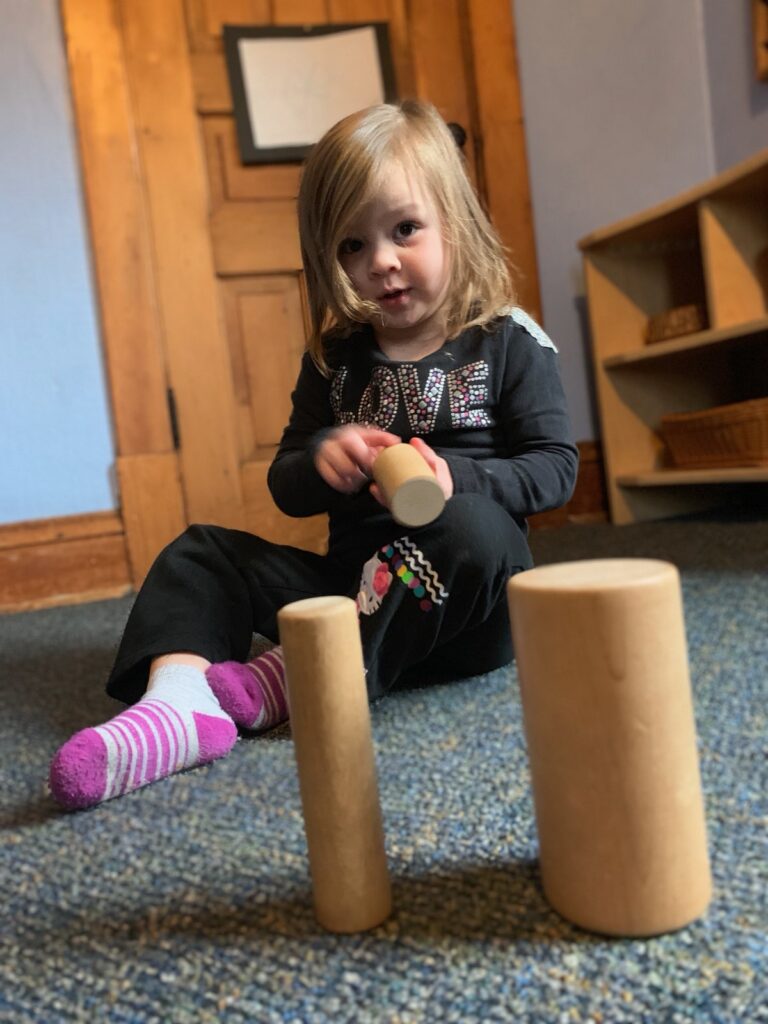
“Here’s a circle!” calls out two-year-old Eleanor.
“My mom calls that a cylinder, and it goes over here,” says four-year-old Nadia.
“A silly-der?” Eleanor is puzzled.
The room erupts in laughter as Nadia gently corrects her: “No, Eleanor, it’s a cylinder.”
Eleanor gamely gives it another try. “Oh, a silly-her?” she asks with a giggle, happy to be the center of attention.
This playful exchange continues, with Eleanor determined to say “cylinder” correctly, much to the hilarity of her friends.
Finally, she nails it: “Your mom calls this a cylinder!” Applause and dancing follow in a lighthearted celebration of Eleanor’s success.
In this vibrant block center gathering, we have all of the ingredients for deep learning. Movement, physical touch, mentoring, and experimentation are all at play.
When mistakes happen, they’re met with laughter rather than frustration and friends are always ready and willing to lend a hand.
This rich environment fosters conversation, cooperation, and problem-solving as the children engage in hands-on learning while meeting important educational standards.
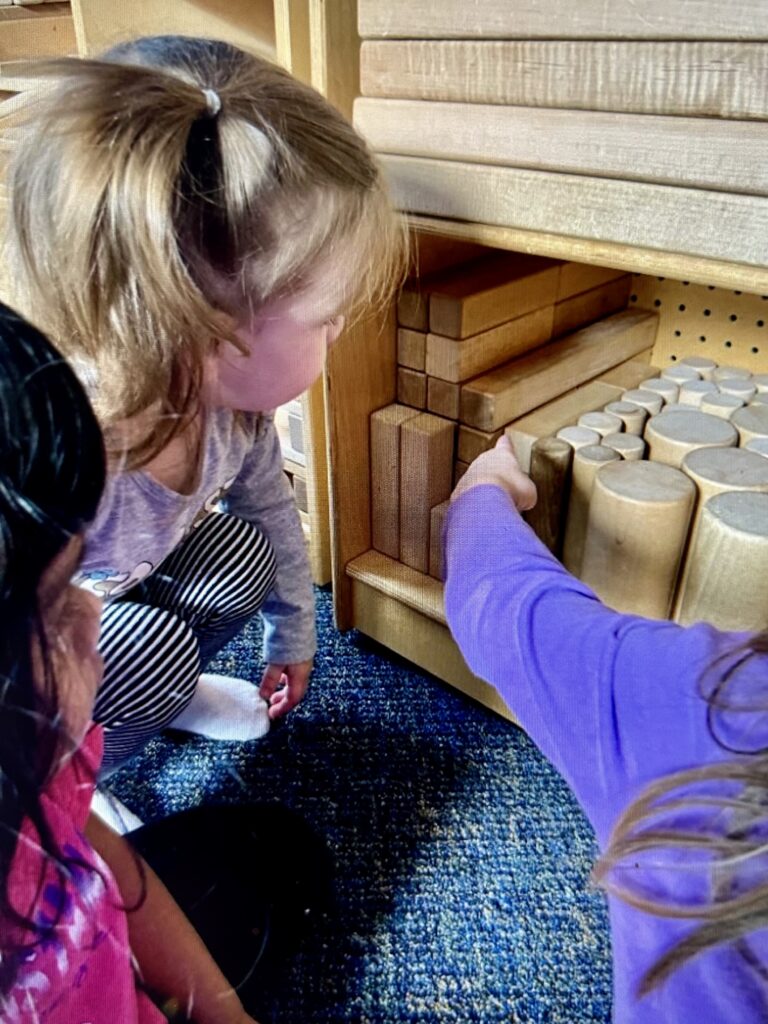
It’s nearing lunchtime, and the children in the block area have somehow caught a case of “pick up” fever.
This is rare, as many of you know. We usually have one older child who assumes the role of “organizer.” This is the child who likes to put the unit blocks in a specific place and in a specific order, while the younger children struggle just to find room on any available surface.
So when I see the blocks being organized on the shelves by attributes, I stop to observe the collaboration and child-led learning that is unfolding in front of my eyes.
“The long blocks go here,” Nadia instructs her younger friends. “If you have two shorter blocks, you can make a long block. See?”
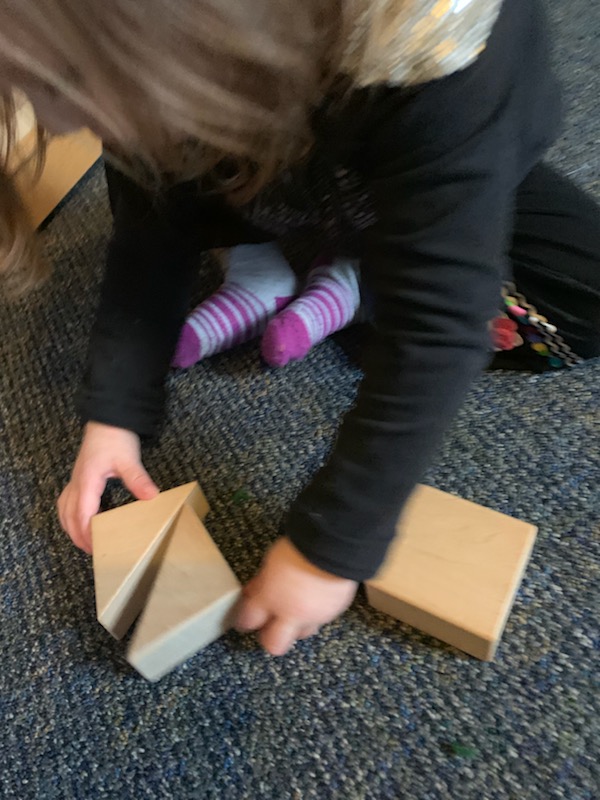
“We can put two triangles together to make a square and stack them here,” Sasha chimes in.
The excitement in the block area is contagious as the children collaborate, explore, and learn together.
As I observe Saaliha, I can almost see the wheels turning in her mind. She carefully experiments with the blocks, turning them this way and that, determined to find the right fit. It’s deep thinking at its finest. When she sees a friend successfully place a block, she mimics her friend’s technique and—success! There’s no grand celebration, just a quiet determination to find another matching block to solidify her learning.
This is where the magic of hands-on learning happens. Saaliha’s brain might not have grasped these concepts on paper, but the tactile experience of handling blocks and using vocabulary in context has helped her put the pieces of the puzzle together.
As educators, we need to focus on making learning real. The Early Learning Standard is met, but more importantly, Saaliha is developing critical cognitive skills in a way that feels natural and engaging.
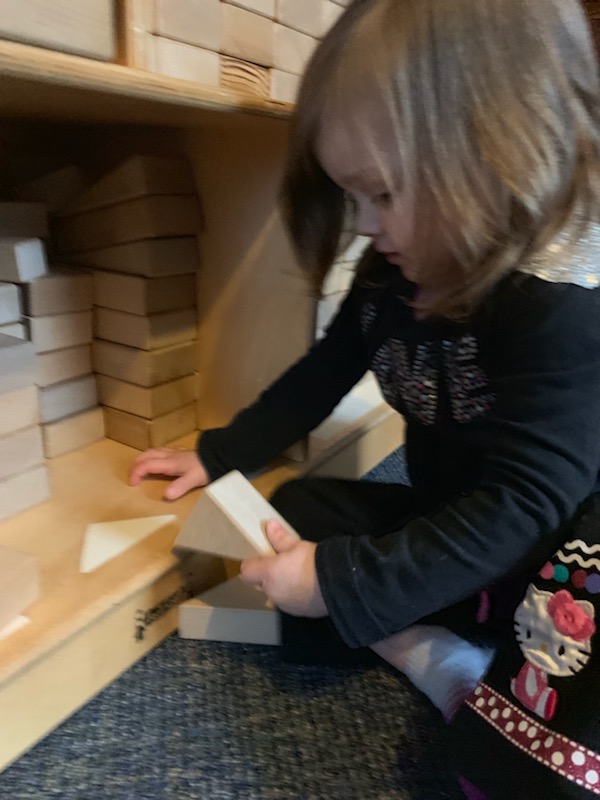
These vibrant moments of play offer invaluable opportunities for observation. During these times, we can step back and truly witness the learning that is happening in front of us.
The block center is often the epicenter of these play buzz moments. Blocks are universally appealing and developmentally appropriate for young children, making them an essential resource in any early childhood setting.
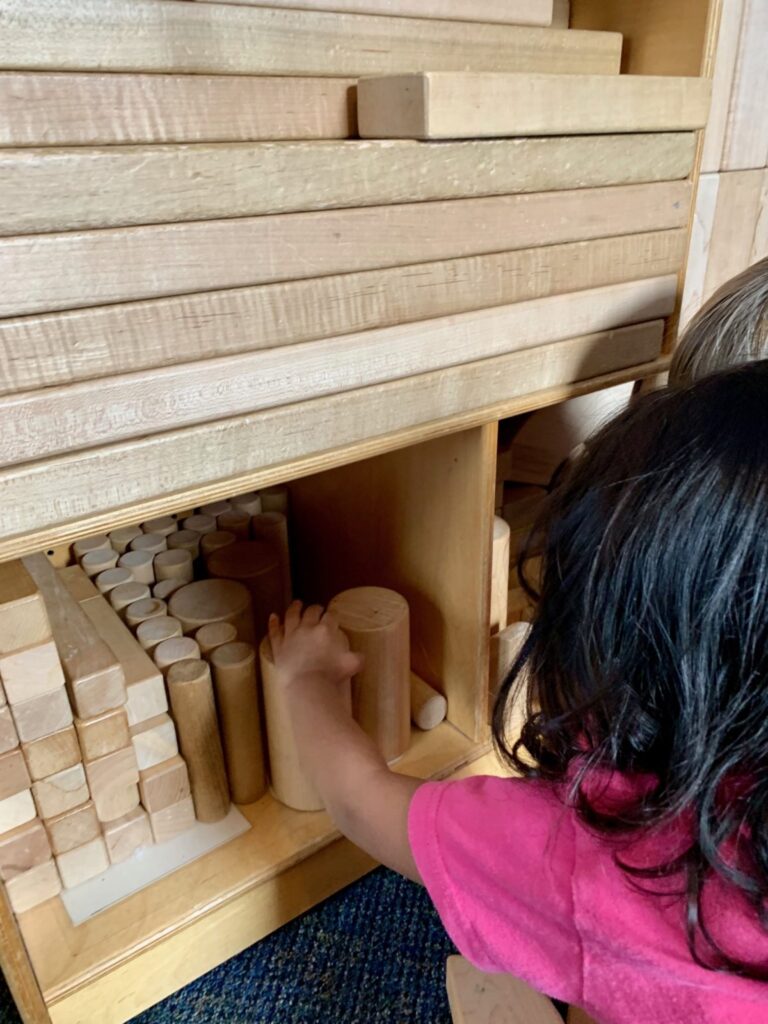
If your program doesn’t have a dedicated block area, consider advocating for one. A well-designed block center can enrich the life of every child and help foster the development of a wide variety of skills.
If you already have a block area, try to carve out longer periods of time for uninterrupted play. Get down on the floor, observe the learning, and check off the early learning standards that the children are meeting. You’ll see so much happening in that corner of your early childhood center, from math and science to geography and art!
The block center is more than just a space for play: It’s a rich environment for building cognitive, social, and emotional skills.
Through block play, children learn about shapes, sizes, and spatial relationships—all while practicing essential communication and cooperation skills.
Let’s embrace these moments of discovery and learning. By fostering a playful atmosphere, you are not only meeting educational standards but also fostering a lifelong love of learning.
So, let’s dive into the block corner and watch our young learners thrive!
I subscribed to this blog and I look forward to joining other professionals in being part of discussions in the Early Math Counts and being open to different views and opinions
Thank you so much for subscribing and for sharing your enthusiasm, Patricia! I’m so glad you’ll be joining us in the discussions on Early Math Counts. It’s exactly this kind of open exchange—where we can explore different views and learn from each other—that helps us all grow as educators. I look forward to your contributions and am excited to continue building this community of thoughtful, passionate professionals. Welcome, and thank you for being part of this journey!
I like to see how classroom blocks can also teach math and patterns.
I like watching my children start out when young stacking the blocks maybe 3 blocks high and then when older they make elaborate house or castles almost as tall as themselves. It’s also fun to watch two or three children build together and problem solve on which shape of block should go where.
The blocks is a fave area in the classroom. So I plan on implementing the new ideas I learned so that activity corners can be even more fun
Using shapes during clean up is such a great idea.
I enjoy building with the children, and they express to me where they want the blocks to be placed.
Love to do more for infants
Love to learn more never did this before was having trouble about the subject takes time for me to understand
Would love to do this with my toddlers
The block center is a favorite in my preschool classroom. Hands on learning is so beneficial and I love watching them build and explore with all the different shapes.
We only have block centers like the above in the 3-5 year old classrooms, but this blog has shown me how useful they could be in our 2 year old classroom as well.
very useful way to incorporate math with toddlers.
Nice
Block area is a favorite for sure. Hands on learning is always the way to go.
I will be having my staff watch this.
Hands-on learning with “real” items for the children to explore, experiment with, and discover concepts through their confident , self-initiative is so much more rewarding to them and us as educators than learning concepts through worksheets. I love this! I am excited to learn so much more from this blog! Thank you for the opportunity.
Welcome to the party, Nicole! Thank you for the kind words! I’m glad you enjoyed this blog! It’s always fun to slow down and capture the learning that happens spontaneously through play!
Using blocks as puzzles pieces is a great idea for the classroom, you could ask the child “Where do you think this piece goes?” “How many shapes do you see, and can you count them for me?”
Using blocks during playtime teaches children how to share, they can also count how many blocks they need if they would like to build a house out of the blocks, it leaves room for teachers to come in and ask them questions such a as “How long did it take you to build this?” the teachers could also communicate and problem solve if children do not get along during play time such as a child saying “hey you took the block I was using!” the teacher could say “Hey isn’t there a red block on the side of you, how about you use that one”
I’m so excited about shapes and sizes.
I think the actual talk between young learners
increases their problem solving skills and actually
having the hands on experience in a math rich
environment.
Experience and teamwork also matter here because they build together snd learn from one to another.